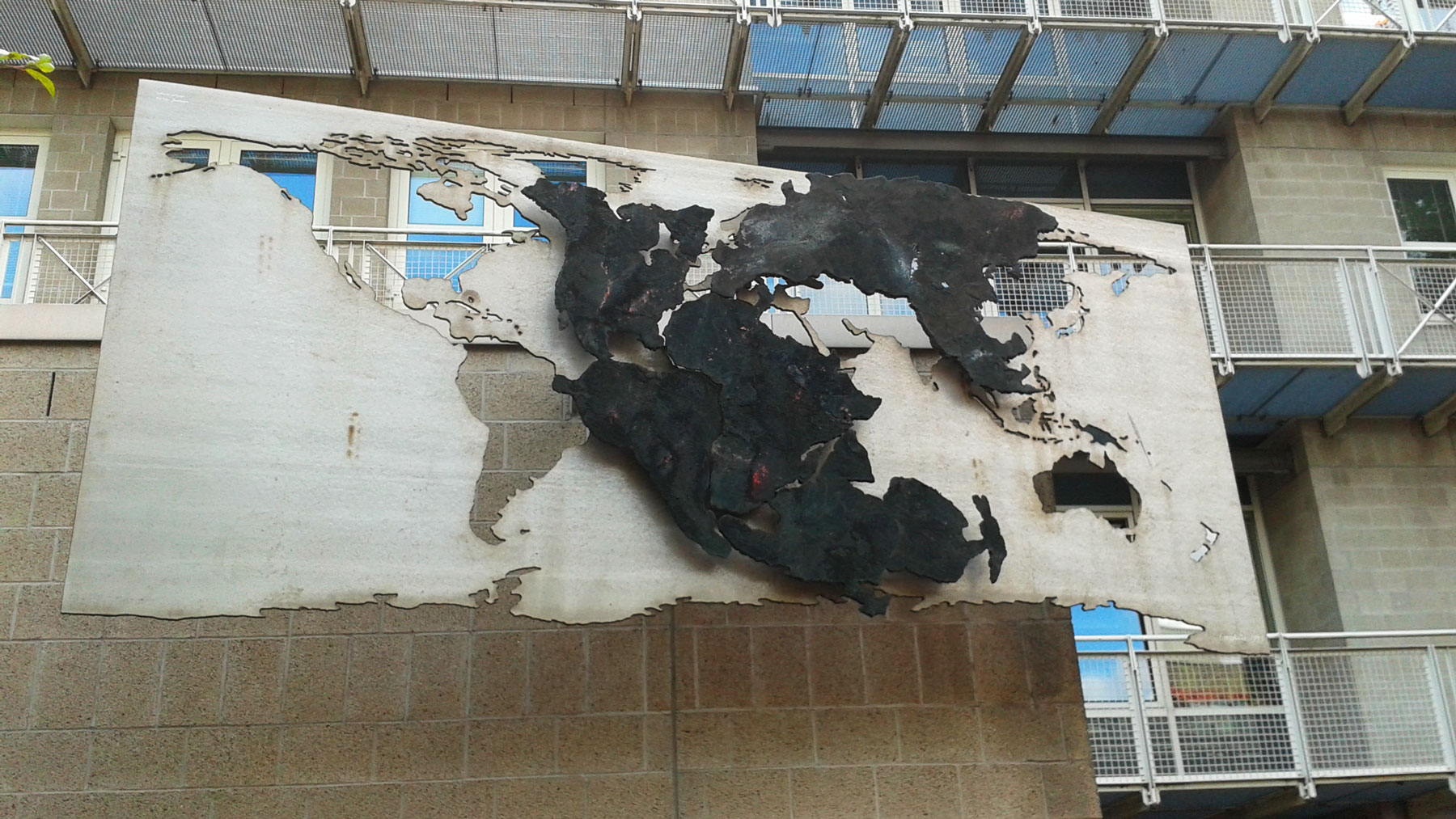
© Sophia Lindemann
Have You Heard of … the Pangea Relief?
The series of introductions to art on the university campus continues: Artur Laskus’ Relief "The Awakening of the Supercontinent 'Pangaea'” at the GEO Building.
What the section in the background of this sculpture is intended to represent is clear to most: our earth’s continents. What exactly the black plate in front of it means might require a little more consideration. However, the name of the installation says it all.
Artur Laskus – artist, architect, and carpenter – depicts the continents of the world in this relief: how they are still arranged today and how they looked about 150 million years ago. At that time, the continents as we know them were still connected and formed a so-called supercontinent called Pangea. This primordial continent existed from about 325 million to about 150 million years BC. The supercontinent then broke apart as a result of plate-tectonic processes, which in time led to how the continents and oceans are arranged today.
The work of art
The relief by Artur Laskus was created in 1993 when the geosciences building was expanded and is located directly at its main entrance on the boulevard. The background is a stainless-steel plate from which today’s continents are cut out. The shape of the primordial continent Pangea made of bronze is in the foreground.
In the Notes on the Relief, the artist himself describes two different ways of interpreting the work. On the one hand, you could look at the relief like a jigsaw puzzle: the individual continents find the “right” position over a long period of time, where they can fit into the cut-out areas. An alternative interpretation is denoted by the holes in the steel plate, which show the original position from which the continents were formed.
The material of this work is also very important. In his notes, Laskus describes that the properties of the metals symbolize the differences between the seabed and the land: “The “newer” material steel for the oceans, the “older” material bronze for the continents; these metals have a similar time–use ratio to the basalt veneer of the oceans and the heterogeneous continents.”
Geosciences
The choice of this work of art for the entrance to the GEO building was of course not made at random. The relief represents what the geosciences are all about – investigating the earth, both in the present and the past.
Next time you go to university and pass this sculpture, take a moment to take a closer look at it. Maybe you’ll discover something we didn’t notice.